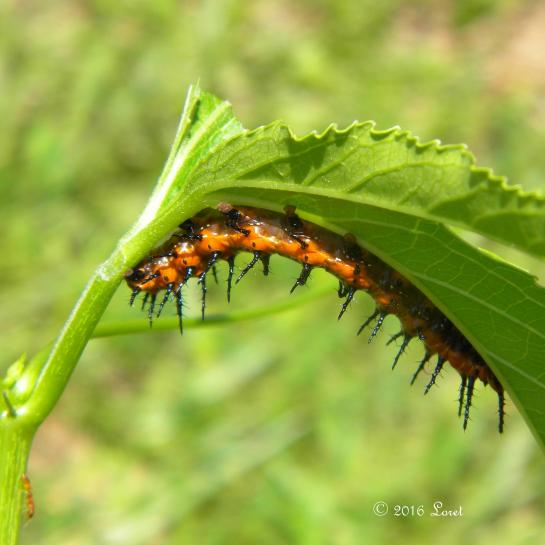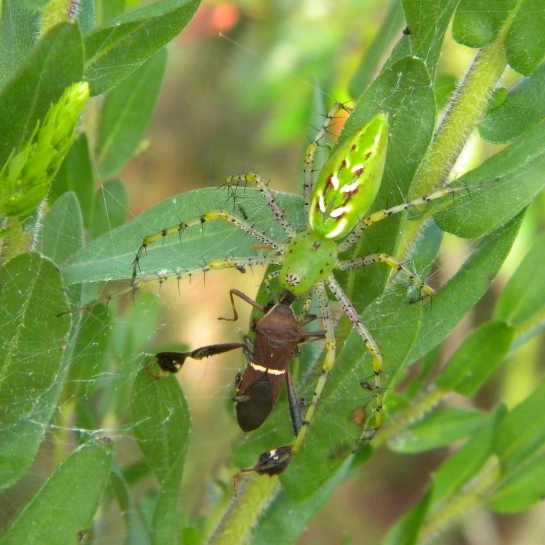CENTRAL FLORIDA CRITTER OF THE DAY: Variegated Fritillary Butterfly (Euptoieta claudia)
Had to chase this infrequent visitor to catch even a blurred photo as it sought nectar from the Bidens alba flowers. I’m hoping that I find some offspring on my Passiflora incarnata which is about 10 feet away.
Larval host: Herbaceous plants and Vinesincluding Purple Passionflower (Passiflora incarnata) and violets (Viola spp.) source: http://edis.ifas.ufl.edu/uw057
Learn: http://www.butterfliesandmoths.org/species/Euptoieta-claudia
Shown on Florida Native Plant: Spanish needles (Bidens alba)
Better photos from past years:
laying eggs on passiflora incarnata in 2012
###

























